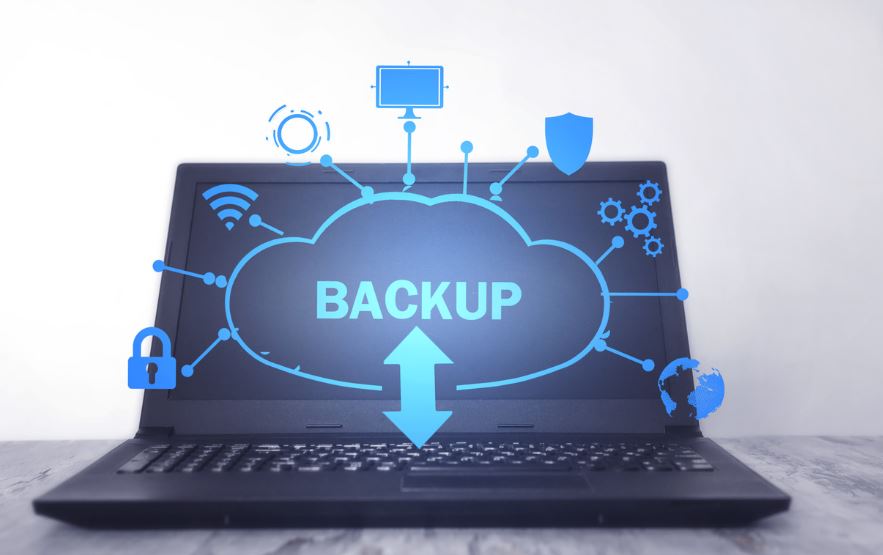In the realm of IT services, understanding hybrid disaster recovery is crucial for businesses, especially SMEs, to fortify themselves against potential disruptions. Let's explore what hybrid disaster recovery entails and why adopting a hybrid approach is of paramount importance.

What is Hybrid Disaster Recovery?
Hybrid disaster recovery refers to a strategy that combines both on-premises and cloud-based solutions to protect critical data and ensure business continuity in the event of a disaster. It leverages the strengths of both approaches to create a comprehensive and resilient disaster recovery plan.
Utilizing on-premises infrastructure allows businesses to have immediate access to their data and applications, facilitating quick recovery and minimal downtime. Conversely, cloud-based solutions offer scalability, flexibility, and off-site data storage, which ensures that businesses can recover their systems even if their physical infrastructure is compromised.
Importance of Hybrid Approach
The importance of a hybrid approach to disaster recovery cannot be overstated. It offers several key advantages over relying solely on either on-premises or cloud-based solutions.
Advantages of hybrid disaster recovery include:
- Enhanced Data Protection: Hybrid disaster recovery ensures that data is protected both on-site and off-site, minimizing the risk of data loss in case of a disaster.
- Improved Business Continuity: By combining on-premises and cloud-based solutions, businesses can maintain operations and quickly recover from disruptions, ensuring minimal downtime and uninterrupted services.
- Cost-Effectiveness: Hybrid disaster recovery allows businesses to optimize their investments by using on-premises infrastructure for immediate recovery while utilizing the cloud for long-term data storage and scalability.
The hybrid approach provides SMEs with a robust disaster recovery strategy that balances the need for immediate access to critical systems with the advantages of cloud-based solutions. By leveraging the strengths of both approaches, businesses can effectively protect their data, maintain operations during disruptions, and optimize their resources.
Understanding the components, benefits, implementation considerations, and best practices for hybrid disaster recovery will enable SMEs to fortify their business against unforeseen events and ensure the continuity of their operations.
Components of Hybrid Disaster Recovery
To fortify your business against potential disasters, it's essential to understand the key components of hybrid disaster recovery. By combining on-premises solutions with cloud-based solutions and ensuring proper integration and coordination, you can establish a robust disaster recovery strategy.
On-Premises Solutions
On-premises solutions refer to the infrastructure and systems that are physically located within your organization's premises. These solutions offer several advantages, including direct control over data and the ability to quickly restore operations in the event of a disaster. Some common on-premises solutions include:
- Secondary data centers
- Backup servers
- Uninterruptible Power Supply (UPS) systems
- Local network infrastructure
To ensure that critical data and applications are readily available within your organization's premises, implementing on-premises solutions can significantly reduce dependency on external resources during a disaster.
Cloud-Based Solutions
Cloud-based solutions involve utilizing remote servers and services provided by a third-party cloud service provider. These solutions offer scalability, flexibility, and remote accessibility, making them indispensable for hybrid disaster recovery. Some common cloud-based solutions include:
- Infrastructure as a Service (IaaS)
- Data backup and recovery services
- Virtual machines and servers
- Disaster recovery as a Service (DRaaS)
Leveraging cloud-based solutions enables you to store and replicate critical data and applications off-site, ensuring their availability even if your on-premises systems are compromised. With the cloud, you gain a scalable and cost-effective solution for disaster recovery, paying for resources only as needed.
Integration and Coordination
Integration and coordination between on-premises and cloud-based solutions are vital for a successful hybrid disaster recovery strategy. This involves establishing seamless communication and synchronization between the two environments, ensuring that data and applications are replicated and updated in real-time.
Integration can be achieved through various methods, such as using dedicated network connections, VPNs (Virtual Private Networks), or API (Application Programming Interface) integration. By integrating your on-premises and cloud-based solutions effectively, you can ensure that your disaster recovery plan functions cohesively.
Coordination involves defining roles and responsibilities, establishing clear communication channels, and documenting the step-by-step process for disaster recovery. Regular testing and drills should be conducted to validate the effectiveness of the hybrid disaster recovery strategy and identify any areas for improvement.
Combining on-premises and cloud-based solutions while ensuring proper integration and coordination helps establish a comprehensive hybrid disaster recovery plan. This approach enhances data protection, improves business continuity, and offers cost-effectiveness, enabling your business to recover quickly and minimize the impact of potential disasters.

Benefits of Hybrid Disaster Recovery
When it comes to safeguarding your business from potential disasters, adopting a hybrid disaster recovery approach offers several key benefits. This section will explore three important advantages: enhanced data protection, improved business continuity, and cost-effectiveness.
Enhanced Data Protection
With hybrid disaster recovery, your business can benefit from enhanced data protection. By utilizing both on-premises and cloud-based solutions, you create multiple layers of redundancy for your critical data. This means that if one system fails or experiences a disaster, your data remains safe and accessible through alternative channels.
Regularly backing up your data and storing it both on-premises and in the cloud helps minimize the risk of data loss due to hardware failures, natural disasters, or cyberattacks. This comprehensive approach ensures that your business can swiftly recover and resume operations with minimal disruption.
Improved Business Continuity
Another significant advantage of hybrid disaster recovery is improved business continuity. In the face of unexpected events, such as power outages or network failures, having a hybrid approach allows your business to quickly switch to alternative systems or locations.
Leveraging cloud-based solutions allows you to access critical applications and data remotely, ensuring that your business operations continue even if your on-premises infrastructure is compromised. This flexibility and resilience help you maintain productivity and minimize downtime, ultimately safeguarding your reputation and customer trust.
Cost-Effectiveness
Hybrid disaster recovery offers cost-effectiveness by providing a balance between on-premises and cloud-based solutions. By utilizing on-premises infrastructure for day-to-day operations and critical data storage, you have full control over your resources and can optimize costs accordingly.
At the same time, leveraging cloud-based solutions allows you to benefit from scalable and pay-as-you-go models. This means that you only pay for the resources you use, reducing the need for significant upfront investments in additional hardware or infrastructure.
Adopting a hybrid approach allows you to balance cost control with scalability, ensuring your disaster recovery strategy aligns with budgetary constraints while maintaining resilience.
Hybrid disaster recovery provides enhanced data protection, improved business continuity, and cost-effectiveness for your business. By adopting a comprehensive approach that combines on-premises and cloud-based solutions, you can effectively mitigate risks, maintain operations during unforeseen events, and optimize costs. Assess your business needs, choose the right solutions, and implement a well-planned hybrid disaster recovery strategy to fortify your business against potential disasters.

Implementing Hybrid Disaster Recovery
Implementing a hybrid disaster recovery strategy is a crucial step in fortifying your business against potential disruptions. This section will guide you through the key aspects of implementing hybrid disaster recovery, including assessing your business needs, choosing the right solutions, and planning and testing.
Assessing Your Business Needs
Before implementing a hybrid disaster recovery solution, it's important to assess your business needs and identify the critical aspects that require protection. Conducting a thorough risk assessment helps you understand the potential vulnerabilities and prioritize your recovery efforts.
Consider the following factors when assessing your business needs:
- Critical Data and Applications: Identify the data and applications that are essential for your business operations. Determine the recovery time objectives (RTO) and recovery point objectives (RPO) for each system to establish the level of protection required.
- Dependencies and Interdependencies: Assess the dependencies between different systems and applications. Understand how failures in one system can impact others to ensure comprehensive protection and smooth recovery.
- Regulatory and Compliance Requirements: Consider the industry-specific regulations and compliance standards that your business needs to adhere to. Ensure that your hybrid disaster recovery solution meets these requirements.
- Budget and Resources: Evaluate your budget constraints and resource availability. Determine the level of investment required for implementing and maintaining the hybrid disaster recovery solution.
Choosing the Right Solutions
Once you have assessed your business needs, it's time to choose the right solutions for your hybrid disaster recovery strategy. This involves selecting the appropriate combination of on-premises and cloud-based solutions that align with your requirements.
Consider the following factors when choosing the right solutions:
| Solution | Description |
| On-Premises Solutions | On-premises solutions involve setting up backup and recovery infrastructure within your own premises. This provides you with direct control over your data and allows for faster recovery times. However, it may require significant upfront investment and ongoing maintenance costs. |
| Cloud-Based Solutions | Cloud-based solutions involve storing your data and applications in the cloud, providing scalability, flexibility, and off-site data protection. This eliminates the need for extensive on-premises infrastructure but may have recurring costs and reliance on internet connectivity. |
| Hybrid Solutions | Hybrid solutions combine the benefits of both on-premises and cloud-based solutions. They offer the flexibility to store critical data and applications on-premises for quick access and use the cloud for backup and disaster recovery. This provides a balance between control and cost-effectiveness. |
Choose the solutions that best suit your business needs, taking into account factors such as data sensitivity, recovery time objectives, budget, and scalability requirements.
Planning and Testing
An effective hybrid disaster recovery strategy requires thorough planning and regular testing to ensure its reliability and effectiveness. Develop a detailed recovery plan that outlines the necessary steps to be taken during a disaster event. This plan should include clear roles and responsibilities, communication protocols, and recovery procedures.
Testing is a critical part of the planning process. Regularly perform recovery tests to validate the functionality and efficiency of your hybrid disaster recovery solution. This helps identify any gaps or issues that need to be addressed before an actual disaster occurs. Make sure to document test results and update your recovery plan accordingly.
Assessing your business needs, selecting the appropriate solutions, and carefully planning and testing your hybrid disaster recovery strategy are crucial steps in establishing a robust and effective system to safeguard your business from potential disruptions. Regularly reviewing and updating your strategy as your business evolves is essential to maintaining ongoing protection and peace of mind.
Considerations for SMEs
When implementing a hybrid disaster recovery strategy, small and medium-sized enterprises (SMEs) face unique considerations that may differ from larger organizations. It's important for SMEs to carefully assess their specific needs and limitations. This section outlines key considerations for SMEs in the context of hybrid disaster recovery.
Budget Constraints
One of the primary considerations for SMEs is budget constraints. Allocating resources for disaster recovery can be challenging, especially for organizations with limited financial resources. However, neglecting disaster recovery can have severe consequences for business continuity.
To overcome budget constraints, SMEs can explore cost-effective solutions that balance their needs for data protection and recovery. This may involve leveraging cloud-based solutions that offer flexible pricing models, reducing upfront hardware and infrastructure costs. Additionally, SMEs can consider outsourcing disaster recovery services to specialized providers, allowing them to access expertise and resources without incurring excessive expenses.
Scalability
Scalability is another important consideration for SMEs when implementing hybrid disaster recovery. As businesses grow and evolve, their disaster recovery needs may change. SMEs must ensure that their chosen disaster recovery solutions can accommodate future growth and adapt to changing requirements.
Cloud-based solutions offer scalability advantages for SMEs, as they provide the flexibility to scale up or down based on business needs. With cloud infrastructure, SMEs can easily adjust their storage and computing resources, ensuring that their disaster recovery capabilities align with their evolving business demands. On the other hand, SMEs should also consider the scalability of their on-premises solutions, ensuring that they have the capacity to handle increasing data volumes and recovery needs.
Compliance and Regulations
Compliance with industry regulations and data protection standards is a critical consideration for SMEs. Depending on the nature of their business and the industry they operate in, SMEs may be subject to various compliance requirements, such as data privacy regulations or industry-specific guidelines.
Implementing a hybrid disaster recovery strategy requires SMEs to align their chosen solutions with compliance obligations. Adopting encryption protocols, implementing secure access controls, and conducting regular audits are essential steps for verifying compliance. Additionally, partnering with service providers experienced in managing industry-specific compliance requirements can be beneficial for SMEs.
Addressing these considerations allows SMEs to develop a robust and customized hybrid disaster recovery strategy that aligns with their unique needs, limitations, and growth aspirations. Prioritizing data protection, business continuity, and compliance is essential for SMEs as they navigate the complex landscape of disaster recovery.

Best Practices for Hybrid Disaster Recovery
To ensure the effectiveness and reliability of your hybrid disaster recovery strategy, it's important to implement best practices that enhance data protection, improve business continuity, and promote cost-effectiveness. Here are three key best practices for hybrid disaster recovery:
Regular Backups
Regular backups are a fundamental aspect of any disaster recovery plan. By creating frequent backups of your critical data and systems, you can minimize the risk of data loss and expedite the recovery process in the event of a disaster. It is recommended to schedule automated backups at regular intervals to ensure consistent protection.
| Best Practice | Regular Backups |
| Frequency | Daily or as per business requirements |
| Data Types to Backup | Critical business data, applications, and configurations |
| Storage Location | On-premises and/or cloud-based storage |
| Backup Verification | Regularly test and validate backup integrity and restoration process |
Employee Training and Awareness
Educating your employees about disaster recovery protocols and procedures is crucial to ensure their active involvement and preparedness. Conduct regular training sessions to familiarize employees with the steps they need to take in the event of a disaster. This includes understanding their roles and responsibilities, recognizing potential risks, and following proper communication channels.
| Best Practice | Employee Training and Awareness |
| Training Sessions | Regularly conduct training sessions on disaster recovery protocols |
| Roles and Responsibilities | Clearly define and communicate roles and responsibilities during a disaster |
| Risk Awareness | Educate employees about potential risks and how to identify them |
| Communication Channels | Establish clear communication channels for reporting and escalating incidents |
Continuous Monitoring and Updates
Regular monitoring and updates are essential to maintain the effectiveness of your hybrid disaster recovery strategy. This includes monitoring the status of your backup systems, testing the recovery process, and staying updated with the latest technologies and industry best practices. By continuously monitoring and updating your disaster recovery plan, you can identify and address any potential vulnerabilities or gaps, ensuring that your systems and data remain protected.
| Best Practice | Continuous Monitoring and Updates |
| Monitoring and Testing | Regularly monitor the status of backup systems and conduct recovery tests |
| Vulnerability Assessments | Perform periodic vulnerability assessments to identify potential weaknesses |
| Technology Updates | Stay updated with the latest technologies and best practices in disaster recovery |
| Incident Analysis | Conduct post-incident analysis to learn from any failures or weaknesses |
Implementing these best practices for hybrid disaster recovery will help fortify your business against potential disasters and ensure the resilience of your IT infrastructure. Keep in mind that disaster recovery is an ongoing process, requiring regular evaluation, testing, and adaptation to evolving threats and business needs.
Secure Your Business with LK Tech’s Disaster Recovery Services in Cincinnati
At LK Tech, our disaster recovery services in Cincinnati offer a robust hybrid approach to protect your business from unexpected disruptions. Our expert team ensures your data and operations are safeguarded with a combination of on-premises and cloud-based solutions.
Get in touch today to learn how our tailored disaster recovery strategies can enhance your resilience and keep your business running smoothly through any crisis.


